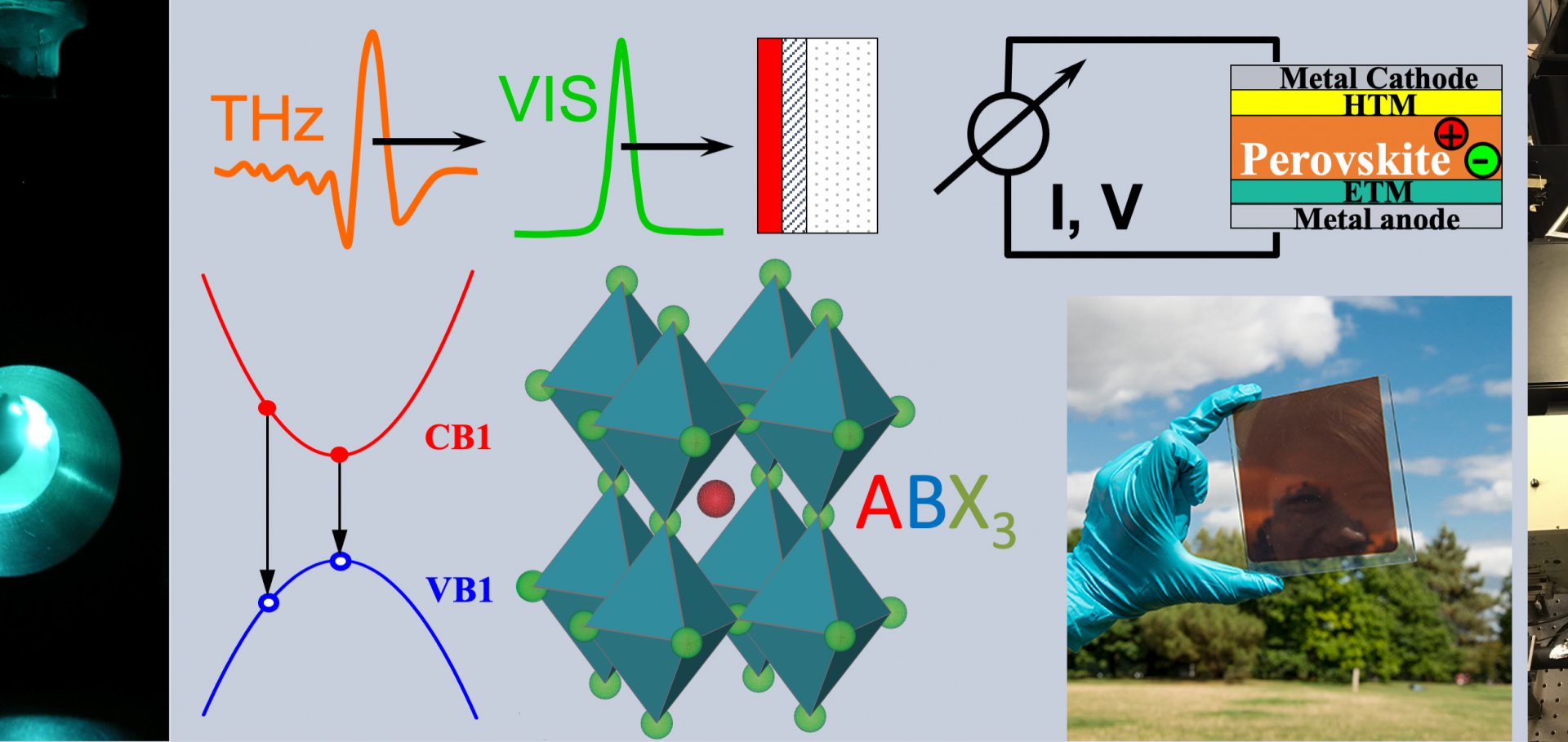Terahertz conductivity analysis for highly doped thin-film semiconductors
International Journal of Infrared and Millimeter Waves Springer 41:12 (2020) 1431-1449
Abstract:
The analysis of terahertz transmission through semiconducting thin films has proven to be an excellent tool for investigating optoelectronic properties of novel materials. Terahertz time-domain spectroscopy (THz-TDS) can provide information about phonon modes of the crystal, as well as the electrical conductivity of the sample. When paired with photoexcitation, optical-pump-THz-probe (OPTP) technique can be used to gain an insight into the transient photoconductivity of the semiconductor, revealing the dynamics and the mobility of photoexcited charge carriers. As the relation between the conductivity of the material and the THz transmission function is generally complicated, simple analytical expressions have been developed to enable straightforward calculations of frequency-dependent conductivity from THz-TDS data in the regime of optically thin samples. Here, we assess the accuracy of these approximated analytical formulas in thin films of highly doped semiconductors, finding significant deviations of the calculated photoconductivity from its actual value in materials with background conductivity comparable to 102Ω− 1cm− 1. We propose an alternative analytical expression, which greatly improves the accuracy of the estimated value of the real photoconductivity, while remaining simple to implement experimentally. Our approximation remains valid in thin films with high dark conductivity of up to 104Ω− 1cm− 1 and provides a very high precision for calculating photoconductivity up to 104Ω− 1cm− 1, and therefore is highly relevant for studies of photoexcited charge-carrier dynamics in electrically doped semiconductors. Using the example of heavily doped thin films of tin-iodide perovskites, we show a simple experimental method of implementing our correction and find that the commonly used expression for photoconductivity could result in an underestimate of charge-carrier mobility by over 50%.Intrinsic quantum confinement in formamidiniumlead triiodide perovskite
Nature Materials Nature Research 19 (2020) 1201-1206
Abstract:
Understanding the electronic energy landscape in metal halide perovskites is essential for further improvements in their promising performance in thin-film photovoltaics. Here, we uncover the presence of above-bandgap oscillatory features in the absorption spectra of formamidinium lead triiodide thin films. We attribute these discrete features to intrinsically occurring quantum confinement effects, for which the related energies change with temperature according to the inverse square of the intrinsic lattice parameter, and with peak index in a quadratic manner. By determining the threshold film thickness at which the amplitude of the peaks is appreciably decreased, and through ab initio simulations of the absorption features, we estimate the length scale of confinement to be 10–20 nm. Such absorption peaks present a new and intriguing quantum electronic phenomenon in a nominally bulk semiconductor, offering intrinsic nanoscale optoelectronic properties without necessitating cumbersome additional processing steps.Charge‐carrier trapping and radiative recombination in metal halide perovskite semiconductors
Advanced Functional Materials Wiley 30:42 (2020) 2004312
Abstract:
Trap‐related charge‐carrier recombination fundamentally limits the performance of perovskite solar cells and other optoelectronic devices. While improved fabrication and passivation techniques have reduced trap densities, the properties of trap states and their impact on the charge‐carrier dynamics in metal‐halide perovskites are still under debate. Here, a unified model is presented of the radiative and nonradiative recombination channels in a mixed formamidinium‐cesium lead iodide perovskite, including charge‐carrier trapping, de‐trapping and accumulation, as well as higher‐order recombination mechanisms. A fast initial photoluminescence (PL) decay component observed after pulsed photogeneration is demonstrated to result from rapid localization of free charge carriers in unoccupied trap states, which may be followed by de‐trapping, or nonradiative recombination with free carriers of opposite charge. Such initial decay components are shown to be highly sensitive to remnant charge carriers that accumulate in traps under pulsed‐laser excitation, with partial trap occupation masking the trap density actually present in the material. Finally, such modelling reveals a change in trap density at the phase transition, and disentangles the radiative and nonradiative charge recombination channels present in FA0.95Cs0.05PbI3, accurately predicting the experimentally recorded PL efficiencies between 50 and 295 K, and demonstrating that bimolecular recombination is a fully radiative process.Focused-probe STEM Ptychography: Developments and Opportunities
Microscopy and Microanalysis Oxford University Press (OUP) 26:S2 (2020) 470-471
Postpassivation of Multication Perovskite with Rubidium Butyrate
ACS Photonics American Chemical Society (ACS) (2020) acsphotonics.0c00878


